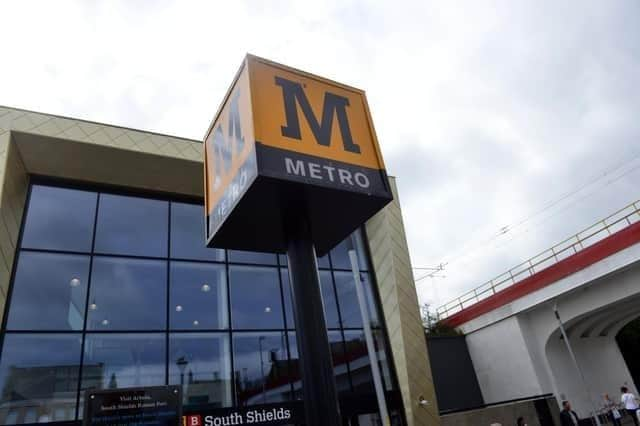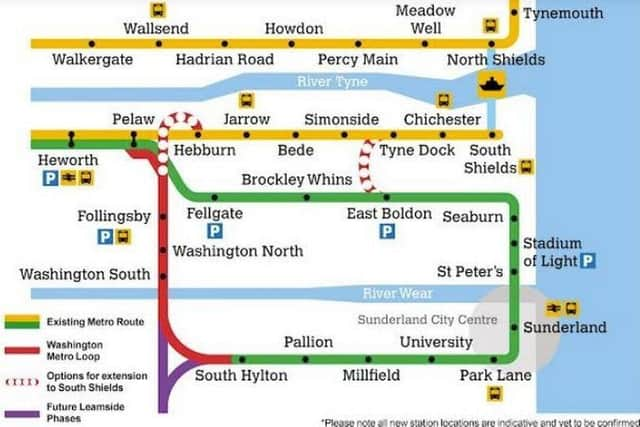North East leaders back 'Washington loop' Metro extension plans - so long as travel chiefs can find the £745 million needed to make the scheme a reality
and live on Freeview channel 276
Proposals were unveiled earlier this month for a long-awaited expansion of the Metro network to finally restore trains to a town that is the fourth largest in the UK without any rail services.
The project would use part of the disused Leamside Line to create a ‘Washington Metro Loop’ connecting to existing stations at Pelaw and South Hylton – with three new stations being built for Follingsby, Washington North and Washington South.
Advertisement
Hide AdAdvertisement
Hide AdAt a meeting of the North East Joint Transport Committee (JTC) on Tuesday (November 15), council leaders gave their formal backing to the plans and authorised regional transport officials to work with the government to secure its funding.


Coun Carl Johnson, the deputy mayor of North Tyneside, said: “We all think this is absolutely fantastic and a great first step towards what will be a fantastic project.”
Tobyn Hughes, managing director of Transport North East, told the committee the next stage in the Washington loop’s progress would be talks with the Government over funding for the development of a full business case and then for actual building work itself.
The cost of building the ambitious scheme, which has won cross-party support from North East MPs, is currently estimated at £745 million.


Advertisement
Hide AdAdvertisement
Hide AdJust drawing up a business case for the scheme is expected to cost up to £7 million.
Mr Hughes warned that the Metro extension, a long-held dream of regional leaders, would take “many years” to come to fruition.
Leaders have been pushing for a restoration of the entire Leamside Line, which runs from Pelaw through to County Durham, in the hope of boosting the North East’s public transport options and freeing up space on the clogged East Coast Main Line.
A JTC report claimed the Washington Metro Loop could deliver £90 million per year in economic benefits and replace 1.7 million car journeys annually, slashing carbon emissions by over 86,000 tonnes.
Advertisement
Hide AdAdvertisement
Hide AdA more ambitious version of the plans would also create an extension between Tyne Dock and Boldon, allowing passengers to travel directly between South Shields and Sunderland without needing to switch trains at Pelaw.
However, this is not currently deemed to deliver sufficient value for money and could take the overall costs to more than £1 billion.
The report adds: “There is a clear need to improve the economic, environment and social outcome within the areas that the South of Tyne and Wearside Loop would serve.
"By 2040 the new Metro services would generate over £90 million per annum into the economy and it would ensure the businesses in the area can access an increased labour pool, while, vice versa, local residents are able to access opportunities which align with their skills, qualifications, and aspirations.
Advertisement
Hide AdAdvertisement
Hide Ad“Similarly improved connectivity to further and higher education, particularly connecting Washington will be a key benefit.
"When considering the environmental impacts around the area, Sunderland, Gateshead, and South Tyneside, the main local air pollutant of concern is Nitrogen Dioxide (NO2), with the primary source being from road vehicle exhaust emissions.
“A shift to a more sustainable mode would bring about associated climate and health benefits.”
